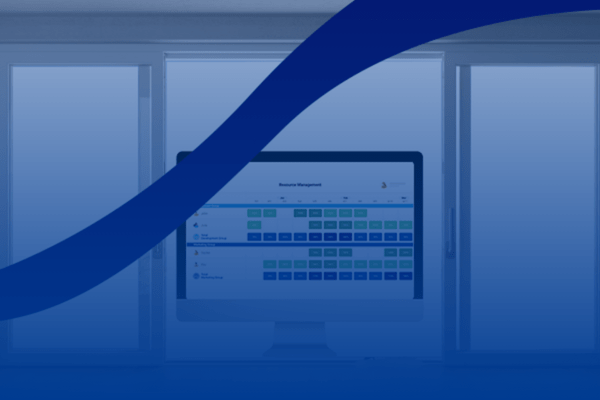Sliding Doors: How to Use What-If Scenario Planning to Improve Resource Management

In the 1998 romantic comedy “Sliding Doors,” the life of Gwyneth Paltrow’s character splits across two completely different timelines based on one small event: whether she catches or misses a train. As the film posits, your life could change dramatically at any instant. And one tiny choice could have major ripple effects — leading to a new career, a better relationship, or even a snazzy haircut.
Project managers know this all too well. Sure, we may not drop an earring on a train track and change the course of our lives. But we know the pain of making one little adjustment and seeing our whole project timelines shift — not always for the best.
That’s where what-if scenario planning can help.
With what-if scenario planning tools, project managers can visualize how changes in their portfolios will impact their resources and timelines. (Just imagine if Gwyneth’s character had had this ability! The movie would’ve been a 20-second TikTok instead of a 90-minute feature.)
Ready to see how your own project management version of “Sliding Doors” would play out with what-if scenario planning? Read on to learn more.
First, what is what-if scenario planning?
What-if scenario planning is the process of analyzing how changes at the task, project, or portfolio level will impact your project processes and resources. For example, you might run a what-if scenario analysis to see if adding a new project to your portfolio will overload your resources. By running these what-if scenarios before they occur, project managers can make more informed decisions to drive future success.
What are what-if scenario planning examples?
Now let’s break down an example of what it’s like to use what-if scenario analysis. And we’ll map it onto the “Sliding Doors” format, of course, to help illustrate.
What-if scenario #1: You miss the train
In this timeline, you’re an overworked project manager who just had yet another high-priority project added to your very full portfolio. You don’t have the what-if scenario software you need to forecast the outcome of adding this project but you’re not going to tell the stakeholders no, so you start the intake process and hope for the best. You’ll figure it out as you go, of course!
Unfortunately, you learn too late that your go-to resources with just the right skills for this project are overbooked. So now you have to tell your stakeholders that you need to either push this timeline back (oops) or find different talent to take on these tasks, which could result in a less-than-optimal product (double oops).
While it doesn’t totally match up with this movie, this is quite clearly the “bad” timeline.
What-if scenario #2: You catch the train
In this timeline, again, you’re an overworked project manager who just had yet another high-priority project added to your very full portfolio. The difference is that, here, you have the what-if scenario modeling tools you need to visualize and prepare for the impact of this new project. By running a scenario analysis, you can clearly see that the resources you need will be overbooked. To adapt, you take them off of a lower-priority project and ensure their schedule is open for this high-priority program.
You’re happy. The stakeholders are happy. The project runs on time. And your talent isn’t burned out. Yes, welcome to the “good” timeline.
How can you improve your what-if scenario analysis?
Evidently, it’s important to choose a project portfolio management tool that includes built-in what-if scenario analysis solutions. Proggio’s what-if scenario planning feature, for example, lets you automatically run these analyses using existing and upcoming projects — and save them for future reference.
With this PPM resource management tool, you can:
- Analyze potential task, project, and portfolio changes without altering your actual data
- Prepare to add projects to your portfolio or delete existing ones
- Visualize a heat map of the impact on your resources
- Identify potential resource overloads and allocation issues
- Confidently make data-backed decisions for better project outcomes
Now, it’s time to put yourself in Gwyneth’s shoes and answer your own “what-if” question: What if you implemented what-if scenario planning into your project management processes? Could it change how you deliver results across your entire portfolio? Only one way to find out: Get started with Proggio.
Potential one page data sheet text:
Data Sheet: Sliding Doors – Using What-If Scenario Planning for Better Resource Management
In the film Sliding Doors, a single missed train drastically changes the course of Gwyneth Paltrow’s character’s life. Similarly, in project management, small adjustments can lead to significant shifts in your timeline and resource allocation. But what if you could predict those changes before they happened? That’s where what-if scenario planning comes in.
What is What-If Scenario Planning?
What-if scenario planning allows project managers to visualize the impact of changes at the task, project, or portfolio level on resources and timelines. By running these scenarios in advance, you can make informed, data-backed decisions to avoid negative ripple effects.
What-If Scenario Examples:
1. Scenario 1: You Miss the Train
Without what-if scenario planning tools, adding a new high-priority project may overload your resources. You’re forced to push back deadlines or use underqualified team members, leading to delays and lower-quality output—this is the “bad” timeline.
2. Scenario 2: You Catch the Train
With the right tools, you can foresee how adding a new project will affect your resources. By reallocating talent and adjusting schedules proactively, you avoid resource burnout and deliver the project on time—welcome to the “good” timeline.
Proggio’s What-If Scenario Planning
Proggio’s built-in what-if scenario analysis helps project managers avoid the “bad” timeline by offering:
– The ability to run task, project, and portfolio scenarios without affecting real data
– Visual heat maps to identify resource overloads
– Tools to confidently add or remove projects and manage resource allocation
Ready to improve your outcomes? Try Proggio’s what-if scenario planning and see how it transforms your project management process.